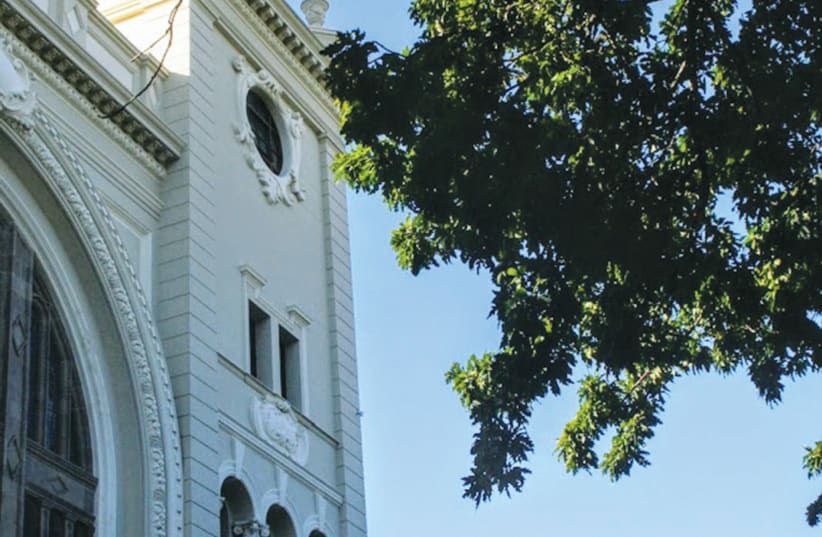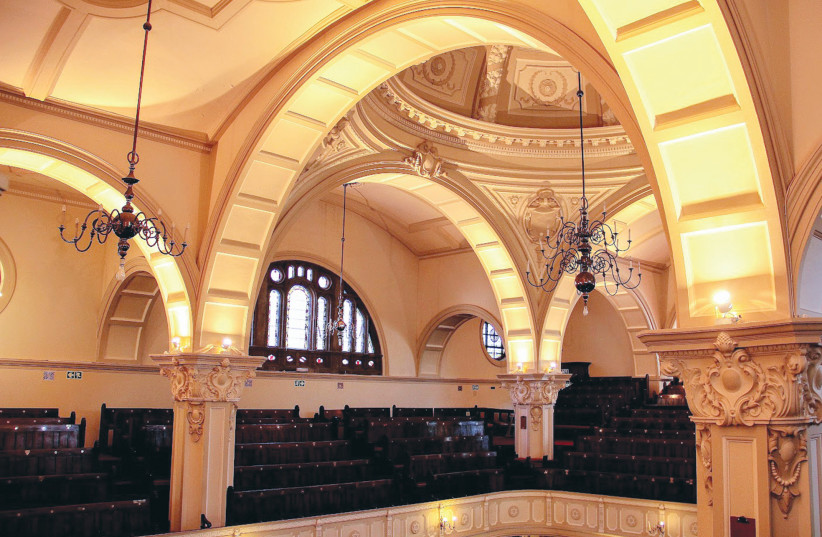Once, on my travels in the US, I encountered a young lady who had recently emigrated from Kenya. I recognized her origins by her distinctive accent.
When I mentioned that I, too, was African, she looked at me aghast, not believing that someone of European appearance with a neo-British accent could have been born and raised on the continent.
Adding to her bewilderment was the strange knitted skullcap I was wearing. Her distrust was understandable for less than one in every 20,000 people living in sub-Saharan Africa is Jewish.
And yet at the southern tip of the continent there exists a vibrant, connected community. Despite a dramatic fall in numbers from 110,000 souls 50 years ago to less than half of that today, South Africa’s Jews continue to breathe their heritage.
Through the era of colonialism, the Cape of Good Hope was considered a crucial strategic asset in imperial Britain’s campaign to dominate the globe. Before the British defeated a combined Dutch-French-local force in the shadow of Table Mountain in 1806, there is no reliable record of any Jewish habitation in Southern Africa.
When the Brits encouraged immigration to these far-off colonies in the 1820s, boatloads jumped at the opportunity of escaping poverty and discovering a new life, among them a smattering of Jews.
A first attempt to make a minyan in the fledgling town of Grahamstown in 1838 did not get off the ground, while according to a contemporary account, in Cape Town several unsuccessful attempts were made “to collect a sufficient number of Israelites for the purpose of Divine worship according to the Mosaic Law, wherein it is commanded that no less than 10 males of 13 years of age can constitute a congregation.”
Then, in 1839, Benjamin Norden, an enterprising and dynamic 1820 Settler, arrived and was decisive in turning these failures around. In September 1841 he sent word to his coreligionists that on the 24th of that month, the eve of Yom Kippur, a service would be held in his home, “Helmsley Place.” And so it was that 180 years ago, the first institutional gathering of Jews on the continent south of the Sahara took place, with 17 adult men (and one would imagine, women and children) in attendance.
The first Jewish wedding, between Amelia Marcus and Michael Benjamin, took place in 1844, and in 1845 Charles Horn was the first child recorded in the register of Jewish births. By 1847 the establishment of the community was affirmed by the fact that a dispute over the financial feasibility of bringing over a rabbi split the community into 2 rival minyanim!
Two houses and an adjoining store were bought and refurbished. The congregation’s first religious appointee, Reverend Isaac Pulver, arriving from Cheltenham, England, formally consecrated the shul on Shabbat eve, 15 September 1849.
THE TRICKLE of Jewish settlers became a stream, and in 1863 the first custom-built synagogue was consecrated in the gardens whose trees bore fruits to supply the passing ships of trade and war. Thus its name, the Gardens Shul. It, of course, adopted British, Ashkenazi traditions, with pomp and formality among its attributes. The community’s numbers grew, and additional shuls began to appear along the Cape coast.
By the end of the century, the original shul could not serve its growing membership, and in 1905 a magnificent new building was dedicated. This shul, situated in a breathtaking setting, with its splendid dome and towers, is undoubtedly one of the most beautiful of its kind. It is in vibrant use to this day.
Despite the tenfold influx of “Lithuanian” Jews in the late 19th and early 20th centuries, the “Mother Synagogue,” as well as many others created in its image, retained its British-based ways. Examples of this phenomenon are the appointment of a succession of British rabbis for many decades and the presence of a male-voice choir, which has been a feature of services for 120 years.
For decades, the rabbi of the shul was de facto designated as the chief rabbi of South Africa. This phenomenon ended when the Johannesburg community grew larger than Cape Town’s and claimed the title for its leading rabbi.
Readers will not be surprised to know that for decades there were two chief rabbis, but agreement was eventually reached, and today, Rabbi Warren Goldstein of Johannesburg is the universally recognized holder of the position.
In line with so many Jewish congregations around the world, Jews began moving to the suburbs, and in the late 20th and early 21st centuries, the fortunes of the Gardens Shul declined.
And then the leadership of the community made an uncharacteristic, bold, visionary move, appointing Rabbi Osher and Sarah Feldman, a young, warm, rabbinical couple and an even younger, swinging hazan who goes by the name of Choni G.
This has proved to be a winning combination. They have revitalized the congregation, instituting progressive, fun programs such as “Friday Night Live,” and “Pop-Up shiurim.” Past generations would be aghast. Yet they have managed to modernize without discarding tradition. To this day, the choir performs, mixing 19th-century Western European liturgical classics with variations on hassidic and pop music.
DESPITE SOUTH AFRICA’S short Jewish history, there are not many Jewish institutions around the world that can take pride in 180 years of continuous service to the community.
The Gardens Shul celebrates this milestone at a time when the future of South Africa is fraught with uncertainty and the Jewish population continues to dwindle. By the end of the year, approximately 500 Jews will have come on aliyah in 2021 alone, and many others will have immigrated to English-speaking destinations.
Yet as long as the community exists, the Gardens Shul will continue to be a majestic centerpiece and warm home.
As for all those congregants who are now scattered around the world, from Jerusalem to Sydney and Vancouver, it will always occupy a space of great affection in their hearts.
The writer’s parents and grandparents were married in the Gardens Shul, and he sang in the choir as a boy soprano.


